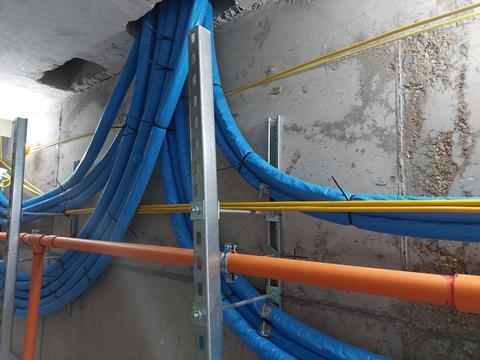Concerns as underground heating systems being installed above ground
More rigorous checks are needed to ensure a common type of pipework meets fire safety standards, two trade bodies have said.
Pre-insulated pipework has historically been used underground for primary heating networks but is now being deployed inside buildings, raising concerns about its impact on fire safety.
In a joint statement, the ∫⁄∂¥…Á«¯ Engineering Services Association (BESA) and the Thermal Insulation Contractors Association (TICA) described the new use as a ‚Äúfundamental change in product application‚Äù which takes the products outside the scope of the quality standards normally applied to their performance.

BESA’s head of technical, Graeme Fox, said the two bodies were “determined to present a united front” on what he said was a “critical fire safety issue”.
“One of the important lessons learned from the Grenfell tragedy was that products may have been tested and certified, but not necessarily for the particular application in question,” he said.
According to the trade bodies, pre-insulated pipework systems typically use either PUR or PE insulants, which do not meet the fire performance criteria typically specified in building services applications.
“In addition, the one-size-fits-all approach to insulation thickness typically undertaken by manufacturers of pre-insulated pipework simply does not allow for the required flexibility to meet individual specification requirements,” the joint statement said.
The pair were particularly concerned about the use of coiled flexible polyethylene insulated piping systems, which they said were being installed in high-risk residential blocks.
They reminded manufacturers, distributors, and installers of such systems of their responsibility to provide evidence of the suitability of these products for the specific application specified.
Specifiers were urged to check on the thermal performance of the polyethylene system and to ask the supplier how it would meet the heat loss/heat gain requirements of BS 5422 and Part L of the ∫⁄∂¥…Á«¯ Regulations.
>>> Cost model: Impact of building regulation changes
Fox said: “We would […] expect all responsible supply chain firms to be able to provide details of how the Euroclass fire rating of the PUR/PE system was achieved and the arrangement of the insulants in the test to determine their exposure to heat and flame.
“We would also expect them to be able to evidence compliance with BS 5422 heat loss/heat gain tables clearly.”
Chris Ridge, TICA’s technical policy manager, added that all responsible companies should be able to provide current Euroclass fire test certification for “the complete range of polyethylene pre-insulated pipework products”.
He added: “Looking ahead, we seek to challenge the wider industry to ensure that all pre-insulated systems meet the required standards. This should not stop at pre-insulated pipework but should also include pre-insulated ductwork products.”



























No comments yet